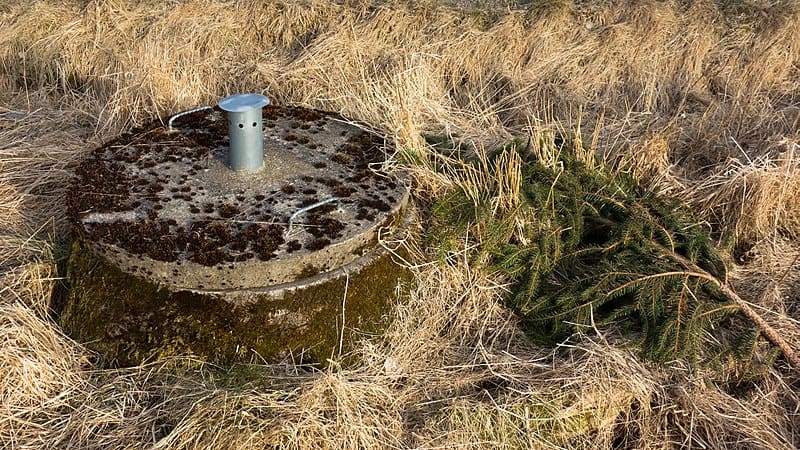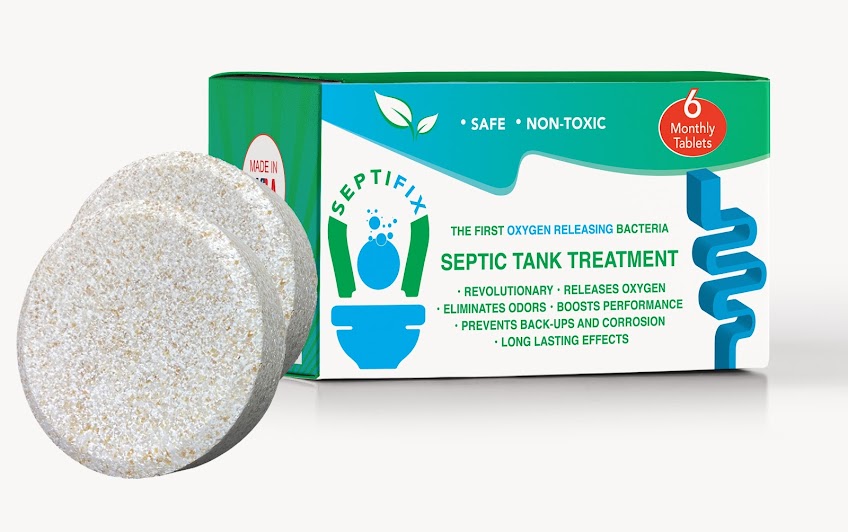Types of Septic Tanks
Septic tank systems are on-site underground wastewater treatment systems, dedicated to individual properties. Septic tank systems are typical in rural areas where there are no centralized sewage systems servicing the municipality. Septic tanks digest organic matter found in a household’s or business establishment’s septic plumbing system. Septic systems utilize both nature and technology to treat wastewater from bathrooms, kitchen drains, and the laundry. A typical septic system consists of a septic tank and a drainfield, or what is also known as soil absorption field.
Soil-based septic systems discharge the effluent coming from the septic tank and into a series of perforated pipes buried underneath a drainfield; into chambers; or other specialized mechanisms designed to gradually release the effluent into the soil.
Basically, there are two septic tank system types: conventional and alternative. The location and soil conditions of the home or business property will generally determine the type of septic tank system that is required for installation.
Conventional Systems can either be Gravity System which is the basic or standard system, or Pressure Distribution System. Gravity Systems utilize gravity to move effluent through the septic tank and into the drainfield. On the other hand, a Pressure Distribution System involves a pump which aids the distribution of effluent throughout the drainfield. Pressure Distribution Systems are typical in most new septic systems because it optimizes use of the entire drainfield. Conventional Systems include:
- Gravity. This system leverages on natural gravity. This is the reason why the drainage field has to be found below the level of the actual septic tank. Furthermore, the base of the drainfield trenches must be 1 to 1.2m above the water table. This soil above the water table functions to treat the wastewater, removing as much toxic matter it can before it returns to the environment. This system requires that the septic tank be manufactured from concrete or reinforced plastic.
- Pressure Distribution. This septic system requires a pump mechanism that will aid in evenly distributing wastewater throughout the drainfield. The pump tank holds the wastewater for a certain period before it releases this into the drainage field. Pressure Distribution systems are typically used when the soil depth is not sufficient to accommodate gravity septic systems.
Alternative Systems, on the other hand, can use either a pumping mechanism or gravity to help effluent coming from the septic tank in trickling through sand, organic matter (like peat and sawdust), constructed wetlands, or other media that can remove or neutralize toxic pollutants such as disease-causing pathogens, nitrogen, phosphorus, and other harmful elements. Some alternative systems are designed to allow the evaporation of wastewater or will disinfect it before it is released into the soil. Alternative Systems include:
- Aerobic Treatment Unit (ATU). An ATU relies on oxygen to break down solid wastes, resulting to “cleaner” wastewater, relative to conventional septic system types. Oxygen is necessary to aid the growth and nourishment of aerobic bacteria within the septic tank. Aerobic bacteria digest or break down the solid waste coming from the home or office facility. Aerobic Treatment Units are common in environmentally-sensitive areas where effluent requires more extensive treatment before being dispersed into the drainfield.
- Mound. Mound Systems are installed when the soil available for treatment is minimal or the drainfield is raised above ground level. The mound design is used when the soil depth is insufficient to accommodate a conventional system. Mound systems work with a sand-filled mound that is raised over the natural soil above a drainfield. The wastewater is treated as it travels through this layer of sand and into the natural soil.
- Sand Filter. Similar to the mound system, sand filter systems utilize a layer of sand but there is also a pump to treat and distribute the effluent, used when minimal soil is available for treatment. Sand filter systems are likewise one of the most common types of septic systems. The layer of sand is situated between the pump tank and the drainfield. The sand is essential in treating the wastewater before it enters the drainfield. Treating the wastewater with sand compensates for the lack of soil that is otherwise typical in treating wastewater in conventional systems.
- Peat Moss. Peat Moss septic systems use peat moss in between the pump tank and the drainfield. The peat what primarily treats the wastewater before it enters the drainfield. Peat moss systems are used in properties where there is shallow soil depth or a high water table.
How a Conventional Septic System Works
All wastewater, both black and grey, run out of your home or business facility through one main drainage pipe and into your septic tank. Blackwater is the mixture of urine, fecal matter and flush water. Blackwater is highly pathogenic, with feces and urine that are diluted in the flush water. On the other hand, water coming from your domestic equipment other than your toilets (like your bathtubs, showers, sinks, and washing machines) is referred to as greywater.
Your septic tank is, ideally, water-tight container (made of concrete, fiberglass, or polyethylene) that is buried within the property. Its job is to hold all your property’s wastewater long enough to allow the solid wastes to settle down to the base of the tank and form what is referred to as the sludge layer. Meanwhile, whatever oil and grease are contained in your wastewater float to the top and form what is known as the scum layer. Compartments and a T-shaped outlet in the septic tank prevent the sludge and scum from leaving the tank and traveling into your drainfield area. Only the liquid waste (or effluent) exits the septic tank and travels to the drainfield.
The drainfield is a shallow and covered excavation made in ideally unsaturated soil. Pretreated wastewater is discharged through a series of perforated pipes onto porous surfaces that gradually allows wastewater to filter though the soil. The soil accepts, treats, and disperses this wastewater before it, ultimately, discharges into groundwater. If the drainfield is overloaded with excessive liquid, it can flood up and cause sewage to flow to the ground’s surface or result to backups in your home or office’s toilets and drains.
Finally, as the wastewater leaches into the soil, harmful coliform bacteria, viruses and other nutrients are removed naturally. Coliform bacteria is a group of bacteria predominantly thriving in the intestines of both humans and warm-blooded animals. A high level of coliform bacteria is an indicator of human fecal contamination in your drainfield and is a sign of possible drainfield malfunction.
What is Your Septic Tank Made Of?
Whether you are in the process of determining what kind of septic tank to install with your septic system or if you are actually troubleshooting your existing septic tank, it’s important to read up on the unique characteristics of the different kinds of sept tanks available to you. Each option will have its distinct advantages and disadvantages. Know such should be essential in ensuring that you make the best decision when installing, repairing, or replacing your septic tank.
Concrete septic tanks are vulnerable to cracking, corrosion, or even separation. Septic tanks made of concrete are typically quite durable over several decades, but cracks can happen much sooner when low quality concrete mix was used in manufacturing the tank, further aggravated by poor septic system maintenance. Effluent can easily seep out of the concrete septic tank through cracks. Likewise, groundwater can seep into the tank. Either way, this seepage can cause problems. Blockage within the tank caused by excess in contents can cause your septic system to back up. Septic tanks made of concrete require regular, periodic inspection and maintenance.
Steel septic tanks, surprisingly, are the least durable and least popular option. Septic tanks made of steel are designed to last about 20 to 25 years, maximum. The reason for this is that steel septic tanks are susceptible to rust corrosion long before the 25-year lifespan is reached. Similarly, the steel septic tank cover can rust through and deteriorate, posing a serious physical hazard of caving in with even just the weight of a person. If what you have or what you’re considering is a steel septic tank, remember that the steel covers that come with it will have to be replaced periodically. These covers can be replaced without having to replace the whole tank. Steel septic tanks require regular and periodic manual inspection and maintenance. Also, as with any other septic tank, you will need to pay close attention to the baffles (entry and exit points) as these tend to corrode first.
Plastic or fiberglass septic tanks are chiefly water-resistant and thus invulnerable to rust, corrosion, and cracking, unlike its steel and concrete counterparts. Nevertheless, septic tanks made of fiberglass or plastic will have its own frailties to watch out for. Low levels of effluent can be an indication that a plug at the base of the tank has become dislodged. Septic tank plugs need to be subjected to regular inspection even when the effluent level is normal. Make it a point to inspect septic tank plugs whenever routine pumping or maintenance checks are done. Sometimes, the actual action of pumping may dislodge one or some of the plugs. Yes, while it is true that plastic or fiberglass septic tanks are more resistant to natural elements and processes within the tank, the lightweight plastic or fiberglass material it is made of renders it susceptible to structural damage. Skilled installation is required to avoid any damages to the tank. Also, the ground right above the tank should be carefully considered. Never drive any vehicles or operate heavy machinery over the tank. The lighter material can also cause a plastic septic tank to shift in the ground in wet soil conditions. Also, fiberglass or plastic septic tanks could rise out of the ground, breaking pipes in the process.
The objective of keeping note of each septic tank type’s strengths and weaknesses is simply to remind property owners that septic tank system problems are mostly due to inadequate septic care and maintenance. The key takeaway here is that you need to periodically have your septic tank inspected and maintained in order to identify potential issues and to avoid these problems before they escalate to health and physical hazards down the line. The cost of septic tank system inspection and maintenance can vary depending on several factors. It is always best to consult with a trusted septic system professional to get accurate estimates and credible consultation.
Septic Tank Costs
If your home or business property is not connected to a municipal sewer system, then it is likely that you have a dedicated on-site septic tank system to handle your property’s wastewater collection, treatment, and disposal cycles. To summarize again, a dedicated septic tank system requires an underground septic tank that holds the wastewater coming from your facility and a soil absorption system that treats and disperses the treated (i.e. clean) wastewater back into ground. Many property owners find the estimation of the actual costs of septic tank installation to be a challenge. This is because many factors add up to the grand total, including septic tank size, tank material, soil makeup, local legal permit requirements, and other installation charges. All of these contribute to the cost of a septic tank system.
The national average cost for septic tank installation in the U.S. is somewhere around $4,000 to $6,000. It can go as high as $9,000, depending on the complexity of the property. Roughly, the cost to install a typical 1,000-gallon septic tank, required for a 3-bedroom home, can range anywhere from $2,000 to $5,000. This includes the price of the tank itself, which costs anywhere between $600 and $1,000.
An anaerobic septic system is a relatively simple type of septic system that consists of a pipe leading from the facility to the tank, and a branched pipe coming from the tank and into the drain field. Anaerobic septic systems rely on anaerobic bacteria (oxygen-aversive bacteria) whose presence aids the breakdown of the wastes in the septic tank. Typically, anaerobic septic systems are much cheaper to install than the more complex aerobic system. These will typically cost you between $2,000 and $5,000 to install.
An aerobic septic system, on the other hand, is a wastewater treatment system that depends on aerobic bacteria (oxygen-breeding bacteria) to break down waste in the septic tank. Because oxygen is not naturally present inside septic tanks, aerobic septic systems will require an air pump to aerate the tank and promote the life of aerobic bacteria so these can break down the waste. An aerobic system will also need more than one tank to accomplish the wastewater treatment process. Aerobic septic systems are much more complicated than the anaerobic class and can cost you anywhere between $10,000 and $20,000 to install.
Again, there are several factors that can affect your septic system project cost, including the septic tank material, the size of the tank, the installer’s professional fees, and the actual ground where the tank will be installed. All these factors need to be considered whenever scouting for a septic services contractor.
What is an Aerobic Septic System?
There are two septic system types in terms of manner of waste breakdown: conventional and aerobic. Both system types result in the same end goal (i.e., sewage breakdown and effluent treatment). It’s the process of waste digestion that spells the difference.
Conventional septic systems are, generally, much simpler than aerobic septic systems. Solid waste from your facility enters the septic tank and settles at the bottom, forming what is called the sludge layer. Liquid waste that enters the same septic tank floats to the top, creating a layer of scum. Anaerobic bacteria in the tank help to break down both the liquid and solid waste, producing wastewater, which can sometimes pass through one more treatment tank before finally being delivered to the drainfield. In order for a conventional septic system to work, your soil depth needs to be sufficient and your soil has to be absorbent. The water tables near the drainfield must not be saturated and unrestricted (e.g. no bedrock formations) for efficient wastewater permeation.
On the other hand, aerobic septic systems are more complicated and expensive to install and maintain. Aerobic systems involve three compartments: a trash tank, a treatment receptacle, and pump tank. All three compartments can be housed under one unit or installed as three separate tanks. Liquid and solid wastes enter the trash tank and settle into layers, just like in the conventional septic systems. The difference happens when wastewater travels to the treatment receptacle, where an aerator is installed to circulate oxygen bubbles throughout the effluent, similar to the action of a fish tank pump. The added oxygen is necessary to provide a suitable environment for aerobic bacteria, which break down wastes more effectively and faster than anaerobic bacteria in conventional systems can. The wastewater then travels into the pump tank for one final treatment with chlorine or another disinfectant substance to eliminate remaining pathogens. From here, the wastewater is considered “environmentally safe” enough on surface vegetation before it reaches the final phase of treatment: the absorption into your ground soil.
Whether you are in the process of deciding to install a conventional or an alternative septic system type or if you are maintaining either of the two types, it is essential to recognize the characteristics of your septic tank system adjacent to your property’s physical characteristics. This makes regular maintenance or periodic repair much manageable and efficient. And this contributes to over-all property peace of mind.
Get Local Septic System Services
[us_map]
https://www.airm.ie/system/download_images/54/original/GFF%20-%20Septic%20Tanks.pdf?1393261562
https://www.epa.gov/septic/types-septic-systems
https://www.co.thurston.wa.us/health/ehoss/septic_types.html
https://inspectapedia.com/septic/Septic_System_Types.php
https://www.homeadvisor.com/cost/plumbing/install-a-septic-tank/
https://www.texaswasteco.com/septic-tank-pumping/conventional-aerobic-septic-system










